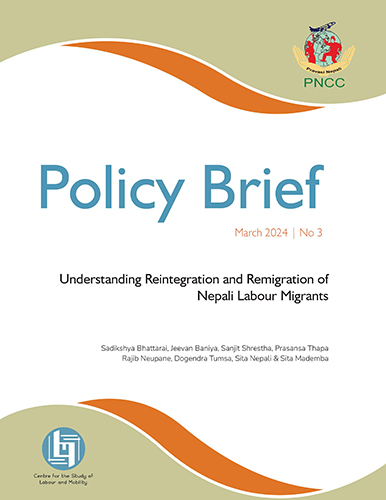Dolakha farmers learn to adapt
Khursani, lahsun, kerau and alaichi might be all common ingredients in Nepali cooking, but until recently they have not been widely cultivated. But as midhill farmers grapple with erratic monsoons and uncertain markets, these crops are providing an alternative source of income.
Farmers in remote parts of Nepal grow a few vegetables for their own consumption, but with spreading roads, irrigation systems, seed distribution and training programs, they are diversifying to vegetables, spices and tree crops. As in Dolakha, this has enhanced the adaptive capacity of farmers to deal with climate change and unpredictable markets for food and labour.
Sixty-six percent of households in Nepal are still engaged in farming, mainly growing rice, wheat, maize and millet. However, as land fragmentation continues, most people are not able to fulfill their food and consumption needs. Many migrate for work to Kathmandu, Malaysia or West Asia.
However, they do not earn as much as they were promised. The remittances they send back to Nepal are no doubt of crucial importance, but the price may be high. Male outmigration is also increasing the workload for those who remain - the women and elderly. Food inflation and fluctuation in the last six years have put additional strain on subsistence households.
A pressing question is whether there is potential for value creation and increased productivity in rural Nepal, if more people choose to or have to return to agriculture. What are the options and the challenges for those who want to invest in local farming as an alternative to migration?
Here in Dolakha young people have started moving back to the countryside and are profiting from cultivating new crops like cardamom, tea, garlic, cauliflower, potatoes, peas, tomatoes, chilli peppers and ginger, alongside traditional food production. Some people are focusing on medicinal plants, such as the cancer medicine Himalayan Yew (Lothsalla) or in honey production, while others are experimenting with kiwis, pears and oranges. The local bimiro, fruit with its sweet melon-like pulp and slight lemony flavour, is another potential cash crop.
Local innovation and experiments to cultivate new crops and improve farming methods are making villagers better equipped to face a future with an uncertain climate. Changing precipitation patterns and unpredictable monsoon rains will increase the risk of crop failure. Farmers who combine traditional food production with spices, vegetables and fruits are less vulnerable to crop failure because the risk is spread over a larger part of the year.
At present, the most common adaptation strategy in the event of a failed harvest is to use money earned from the sale of winter vegetables to buy rice later on in the year. In the long term, experimentation with new varieties of rice and grains and diversification of income through cultivation of new crops for sale are helping reduce vulnerability and poverty in rural areas.
Small-scale farming households have limited experience with producing for the market and do not have the necessary trade networks. Cultivation of potatoes and vegetables is therefore often the first step of crop diversification, as these crops can also be eaten if they are not sold. Chilli and cardamom can achieve higher market prices, but cannot fill the hungry stomach. They are thus less attractive for the most land-poor and marginalised farmers, but are a good option for more prosperous ones.
In Dolakha, unlike remoter parts of Nepal, the spread of roads, irrigation and establishment of credit and savings groups and trading cooperatives have helped farmers innovate. Sustaining these investments in agriculture can have positive effects both for the productivity of food crops and for income generation in rural areas. Families, and especially young men, must see it as a viable and realistic option to invest their labour and resources in agriculture, if the goal is to improve rural food security and development.
Nepal’s ever-increasing reliance on unskilled labour migration accompanied with increasing food imports is not a sustainable strategy for ensuring national and household food security. Instead, if efforts are made to transfer useful lessons about how to foster local development, innovation in agriculture and new opportunities for income in rural areas, the success from places like Dolakha could become an inspiration to other parts of Nepal and the Himalaya to cope with the effects of climate change.
Published on: 4 April 2014 | Nepali Times



GET IN TOUCH